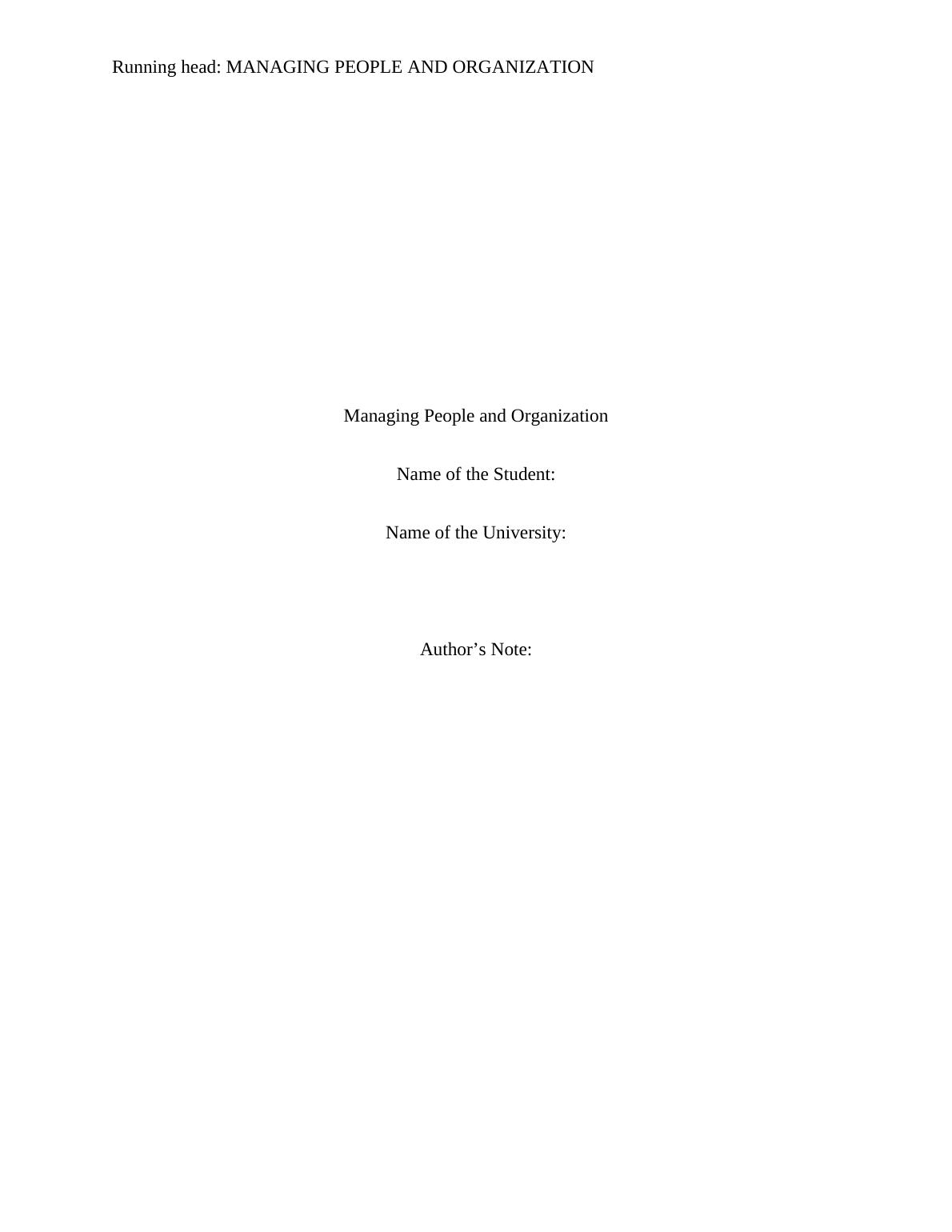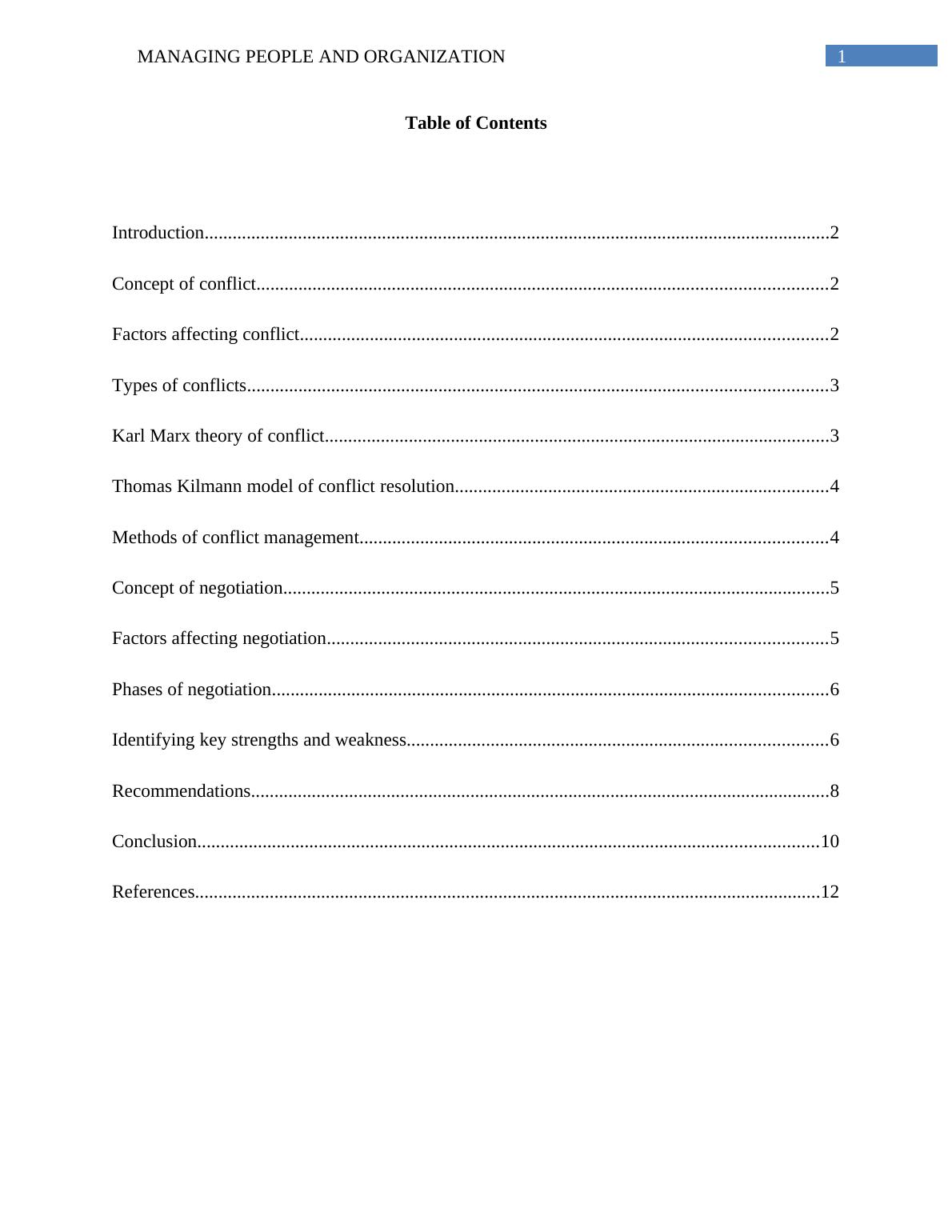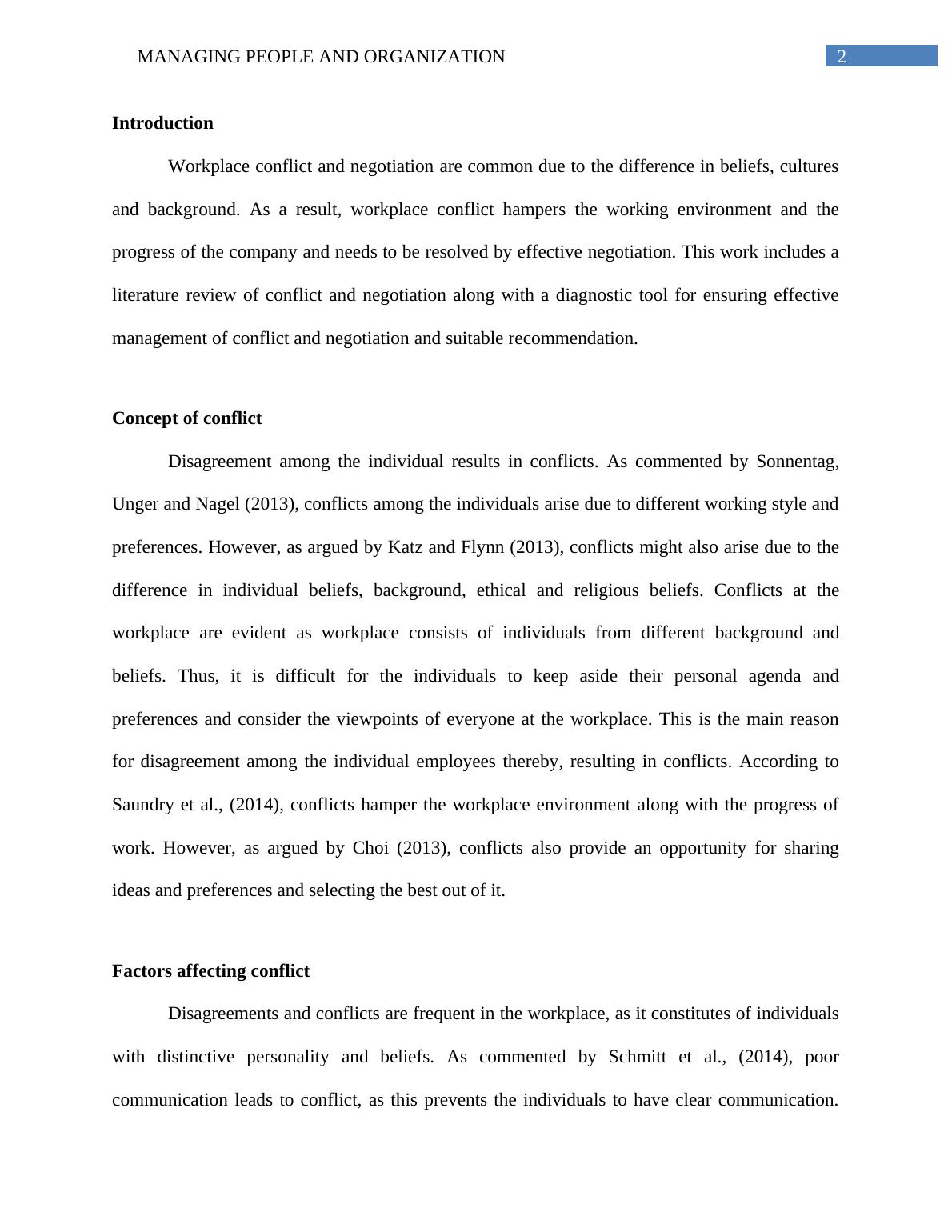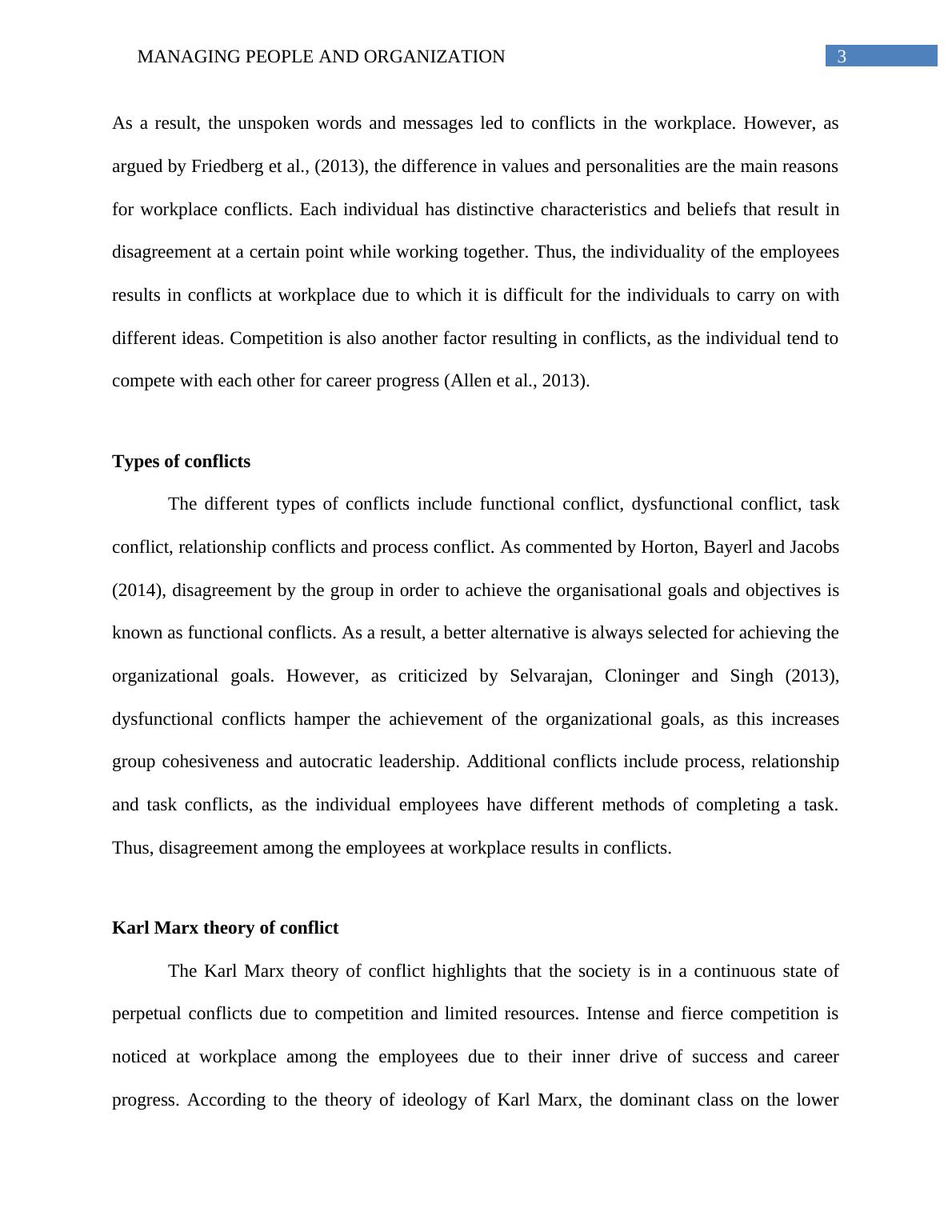MGMT20129 Managing People and Organizations Assignment
Added on 2020-05-28
14 Pages3169 Words57 Views
Running head: MANAGING PEOPLE AND ORGANIZATIONManaging People and OrganizationName of the Student:Name of the University:Author’s Note:

1MANAGING PEOPLE AND ORGANIZATIONTable of ContentsIntroduction......................................................................................................................................2Concept of conflict..........................................................................................................................2Factors affecting conflict.................................................................................................................2Types of conflicts............................................................................................................................3Karl Marx theory of conflict............................................................................................................3Thomas Kilmann model of conflict resolution................................................................................4Methods of conflict management....................................................................................................4Concept of negotiation.....................................................................................................................5Factors affecting negotiation...........................................................................................................5Phases of negotiation.......................................................................................................................6Identifying key strengths and weakness..........................................................................................6Recommendations............................................................................................................................8Conclusion.....................................................................................................................................10References......................................................................................................................................12

2MANAGING PEOPLE AND ORGANIZATIONIntroductionWorkplace conflict and negotiation are common due to the difference in beliefs, culturesand background. As a result, workplace conflict hampers the working environment and theprogress of the company and needs to be resolved by effective negotiation. This work includes aliterature review of conflict and negotiation along with a diagnostic tool for ensuring effectivemanagement of conflict and negotiation and suitable recommendation.Concept of conflictDisagreement among the individual results in conflicts. As commented by Sonnentag,Unger and Nagel (2013), conflicts among the individuals arise due to different working style andpreferences. However, as argued by Katz and Flynn (2013), conflicts might also arise due to thedifference in individual beliefs, background, ethical and religious beliefs. Conflicts at theworkplace are evident as workplace consists of individuals from different background andbeliefs. Thus, it is difficult for the individuals to keep aside their personal agenda andpreferences and consider the viewpoints of everyone at the workplace. This is the main reasonfor disagreement among the individual employees thereby, resulting in conflicts. According toSaundry et al., (2014), conflicts hamper the workplace environment along with the progress ofwork. However, as argued by Choi (2013), conflicts also provide an opportunity for sharingideas and preferences and selecting the best out of it. Factors affecting conflictDisagreements and conflicts are frequent in the workplace, as it constitutes of individualswith distinctive personality and beliefs. As commented by Schmitt et al., (2014), poorcommunication leads to conflict, as this prevents the individuals to have clear communication.

3MANAGING PEOPLE AND ORGANIZATIONAs a result, the unspoken words and messages led to conflicts in the workplace. However, asargued by Friedberg et al., (2013), the difference in values and personalities are the main reasonsfor workplace conflicts. Each individual has distinctive characteristics and beliefs that result indisagreement at a certain point while working together. Thus, the individuality of the employeesresults in conflicts at workplace due to which it is difficult for the individuals to carry on withdifferent ideas. Competition is also another factor resulting in conflicts, as the individual tend tocompete with each other for career progress (Allen et al., 2013). Types of conflictsThe different types of conflicts include functional conflict, dysfunctional conflict, taskconflict, relationship conflicts and process conflict. As commented by Horton, Bayerl and Jacobs(2014), disagreement by the group in order to achieve the organisational goals and objectives isknown as functional conflicts. As a result, a better alternative is always selected for achieving theorganizational goals. However, as criticized by Selvarajan, Cloninger and Singh (2013),dysfunctional conflicts hamper the achievement of the organizational goals, as this increasesgroup cohesiveness and autocratic leadership. Additional conflicts include process, relationshipand task conflicts, as the individual employees have different methods of completing a task.Thus, disagreement among the employees at workplace results in conflicts. Karl Marx theory of conflictThe Karl Marx theory of conflict highlights that the society is in a continuous state ofperpetual conflicts due to competition and limited resources. Intense and fierce competition isnoticed at workplace among the employees due to their inner drive of success and careerprogress. According to the theory of ideology of Karl Marx, the dominant class on the lower

End of preview
Want to access all the pages? Upload your documents or become a member.
Related Documents
Difference between Destructive and Productive Conflicts in Workplacelg...
|5
|1038
|183
Conflict and Negotiation in a Multi-Agent Teamlg...
|14
|3331
|332
Management and Business Context - Assignmentlg...
|10
|2392
|62
Conflict Management Assignment 2022lg...
|11
|2924
|12
Compromise and Collaboration as Effective Strategies for Conflict Management in Organizationslg...
|11
|2716
|59
HRM101 Human Resource Management(HRM) - Deskliblg...
|7
|1498
|86